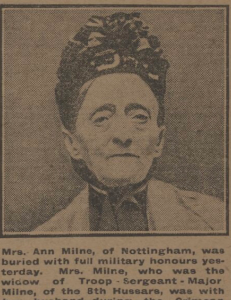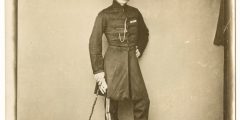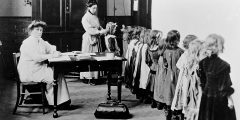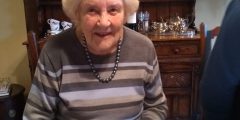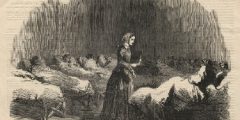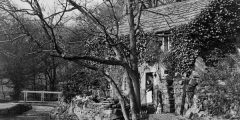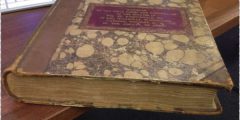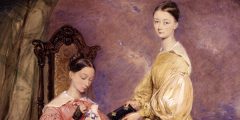Ann Milne – A Nottingham Army Wife who Nursed in the Crimean War
September 1, 2020
Our latest guest post comes from David Stewart OBE, a former head teacher and champion of the Nottingham arts scene and local history. This post discusses the Crimean War experience of Ann Milne, an army wife from Nottingham. Along with previous posts by Darcie Mawby on nurses and Sarah Topliss on Dr Edward Wrench, it …
Nursing Lives in the Crimean War
May 7, 2020
This post comes courtesy of Darcie Mawby, a second year PhD student at the University of Nottingham working on gender, conflict and identity in women’s accounts of the Crimean War, c. 1854–56. It is based on recent research conducted at the National Archives in Kew. [Crimean War. Women nurses tending wounded soldiers as “woman’s mission”. …
Edward Wrench: An Army Doctor in the Crimean War
This blog post is by Sarah Topliss, a volunteer citizen researcher who has in recent months been investigating the Wrench archive held by the University of Nottingham’s Manuscripts and Special Collections. The archive contains some 32 boxes of letters describing Wrench’s life in the Crimean War, Indian Rebellion, and work for the Duke of Devonshire …
Where was Florence Nightingale?: Developing Municipal Health Visiting After 1900
This piece by Dr Pamela Dale, honorary fellow at the University of Exeter, looks at the development of health visiting at a municipal level after 1900. This blog is drawn from Pamela’s ongoing research – if you have information that could help her, do get in touch! [Image: Woman Sanitary Inspector examining young girls’ hair, …
Parallel Paths in History: Florence Nightingale and John Smedley Jr
This guest piece is written by Steven Schmidt, a volunteer history researcher with the John Smedley Archive Charitable Trust. [Image: John Smedley’s Hydropathic Institute, Matlock Bank, Derbyshire, c. 1872. Wellcome Collection.] The central Derbyshire parish of Dethick, Lea, and Holloway is located on the eastern side of the Derwent Valley. Relatively thinly populated today, it …
Margaret Povey, Nightingale’s Nearest Living Relative – and Nightingale Nurse
December 9, 2019
Richard and Paul from the project team recently travelled to meet Florence Nightingale’s nearest living relative, Margaret Povey, in a meeting kindly arranged by friend of the project, John Rivers. Margaret – the granddaughter of Nightingale’s cousin, General Sir Lothian Nicholson – also possesses an original letter from Nightingale to her uncle George Nicholson, which …
‘Mythical Florence’: Where Does the Lady with the Lamp Stand Today?
February 26, 2019
In this piece for the AHRC, also published on their blog, Dr Jonathan Godshaw Memel describes Nightingale’s uncomfortable relationship with public representations of herself. Florence Nightingale remains curiously familiar to us today. Whether or not she intended it herself, her fame has lasted well beyond her lifetime. But where do depictions of the Lady with …
The Aqueduct Cottage
December 19, 2018
Our first guest blog post comes from Ron Common, a Derbyshire resident who has volunteered in the area around Florence Nightingale’s home as a DerwentWISE Cultural Heritage Volunteer. Ron has been championing the case for an abandoned building standing on what is known as the ‘Nightingale Branch’ of the Cromford Canal. You can find out more …
William Nightingale’s ‘Domesday Book’
October 25, 2018
This volume, dated 1825, was produced either by, or for, William Edward Nightingale (born William Shore), Florence’s father. It was most likely drawn up in the early 1820s. In 1815, William had assumed possession of a considerable estate of land, bestowed on him in the will of the eccentric Derbyshire industrialist Peter Nightingale, his uncle, …
The Suitor and the Sister
Richard Monckton Milnes (1809-1885), a poet and politician, was the person that Florence Nightingale came closest to marrying. Her decision to reject him in 1849 led to a prolonged period of soul-searching, one that continued during a voyage to Egypt and Greece in 1850, and only began to be resolved when, on the way back, …

